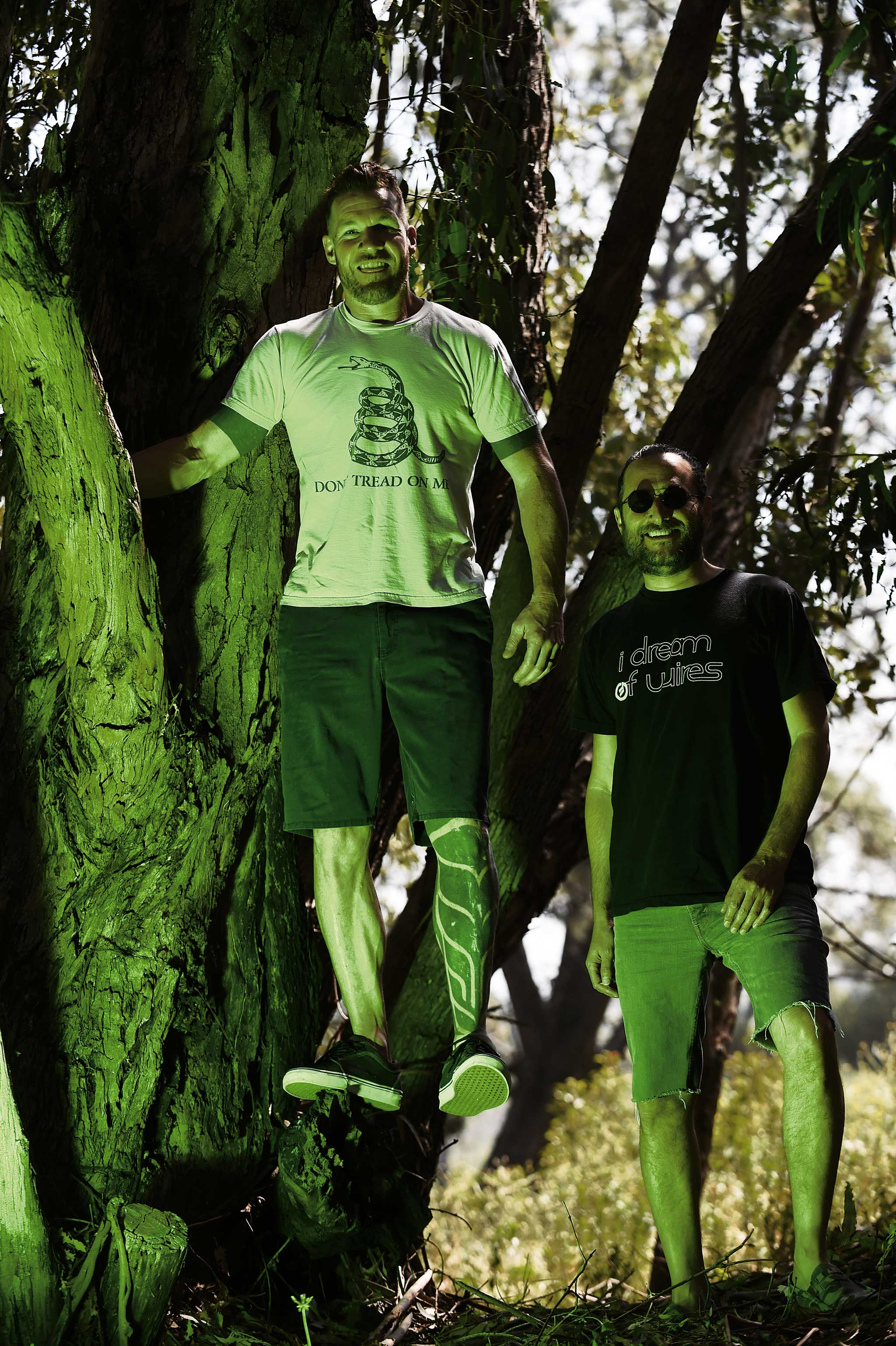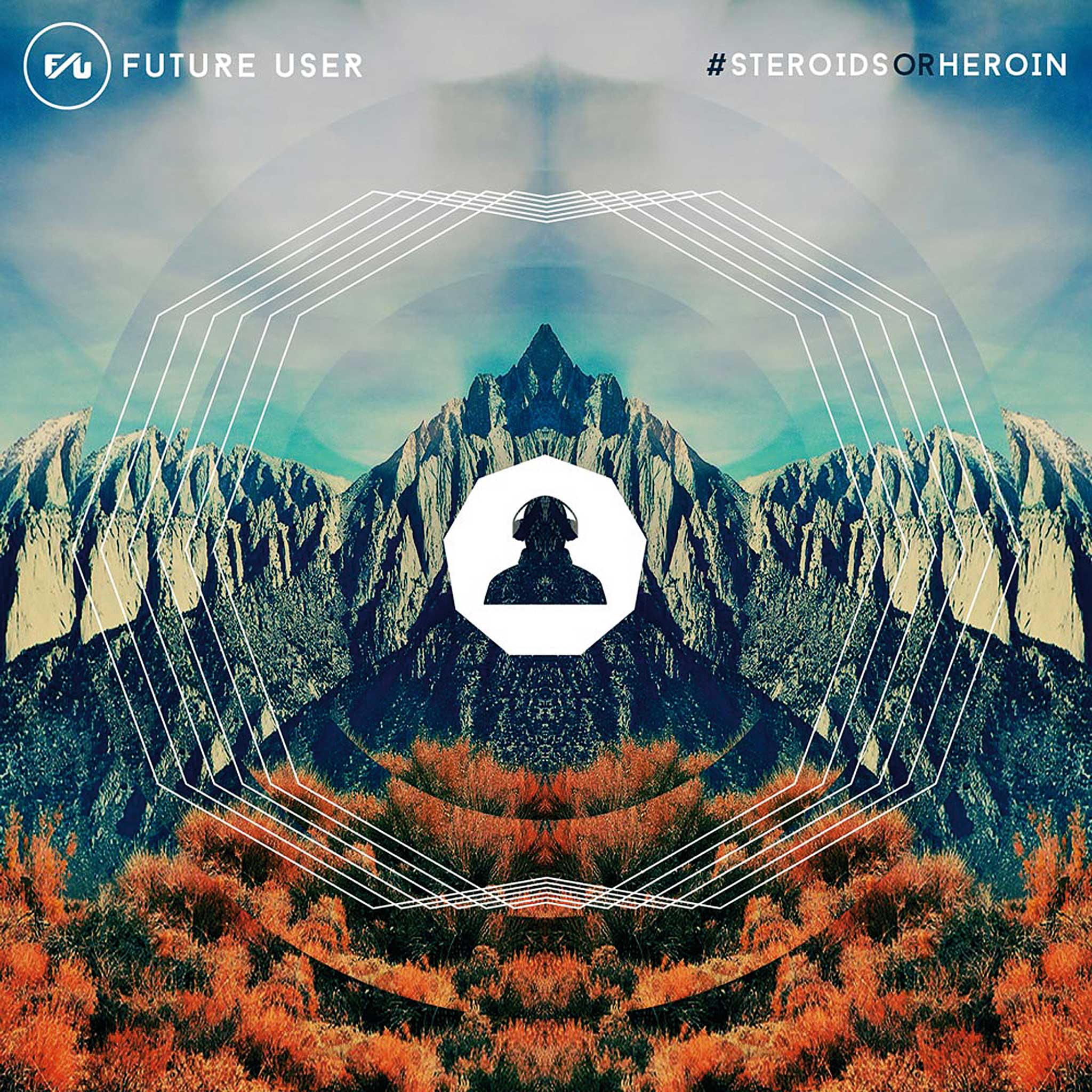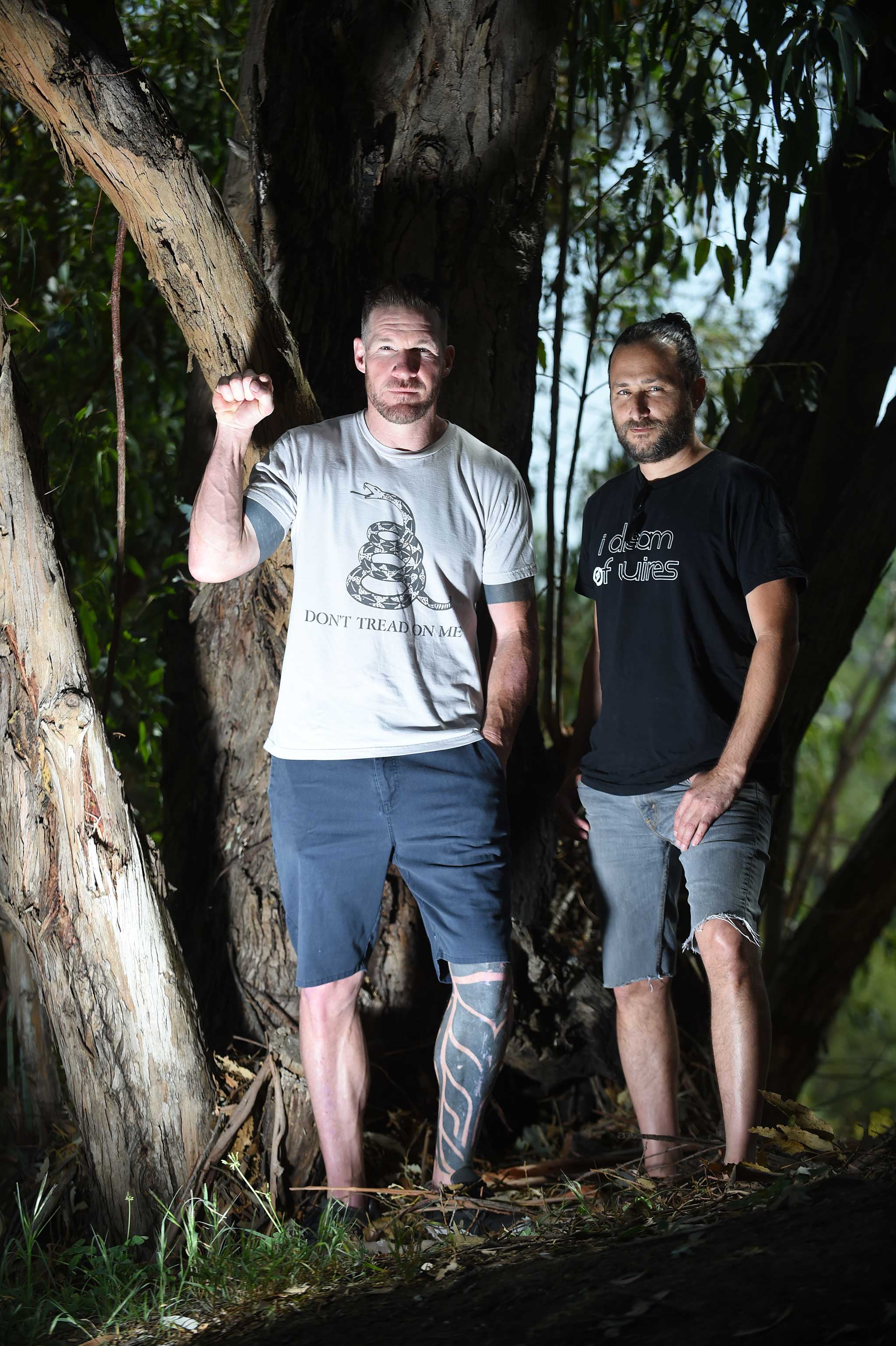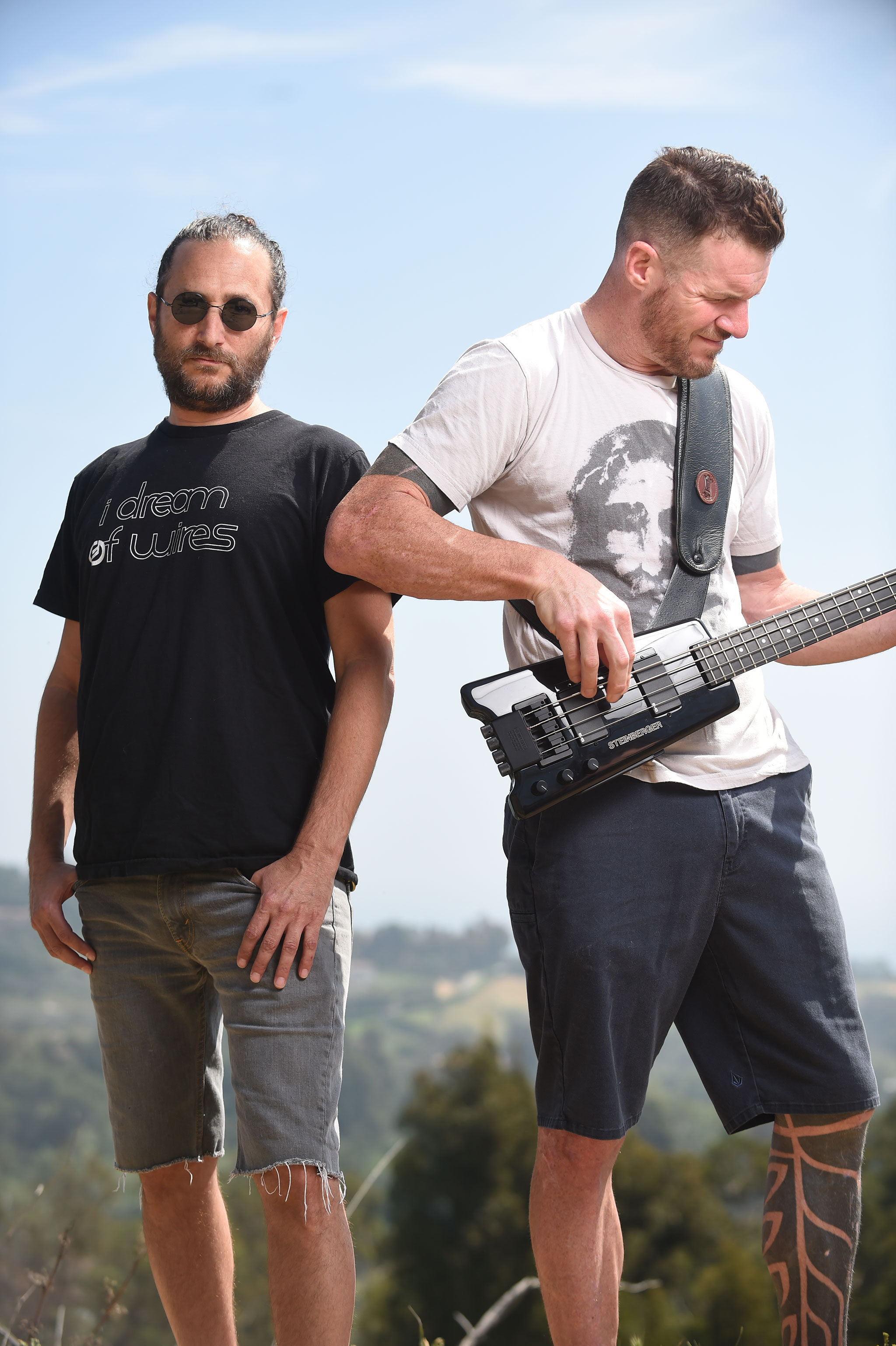“Prog’s a dirty word” – but they like it.
Many will know Tim Commerford as the erstwhile bassist of politically proactive, pioneering rap metal band Rage Against The Machine. While they are no more, Commerford has kept himself busy, first in Audioslave with his RATM bandmates and Soundgarden singer Chris Cornell, then with a Rage reunion and a few other guest appearances before he sunk his teeth into his new project, Future User.
We’re sitting in the Malibu home studio of his current bandmate, guitarist Jordan Tarlow. The pair met as neighbours and righteously bonded over a deep mutual appreciation of late-70s Rush (they overlap in taste between _2112 _and Hemispheres). With Tarlow having spent his formative years in New York garage punk band The Fuzztones, Future User is a chance for them to indulge in a different musical direction than they’re both used to.
In Future User, they have concocted a melange of guitar-driven electronica they classify as ‘progtronic’ music, in which you might hear snippets of Primus, Killing Joke and Deftones side project, ††† (pronounced ‘crosses’). As for the band’s name, Future User suggests connotations with science fiction and drugs. Unsurprisingly, considering the album is titled #SteroidsOrHeroin, it’s the latter that runs through this band’s veins, and it’s a subject that’s close to home.
“That title comes from a song about a relative who is a drug addict and who has kids who are drug addicts – tomorrow’s future users,” Commerford explains, but admits that he himself is “glad he took drugs”.
“I did this drug called DMT – dimethyltryptamine,” he explains. “It’s the most hallucinogenic drug known to man. It’s like [the psychoactive plant brew] Ayahuasca. I spent a lot of time on the DMT forums, looking at poems, because it changed me – like it or not. I did it one time, 15 years ago, and it had a resounding effect on the way I view the world and religion. I will never believe in God again after that.”
Commerford read these poems while he was writing the lyrics for the album. It’s the first time he’s sung songs consisting solely of his own lyrics, but he doesn’t think of it as a big deal.
“I’ve said it before – and I’ll stand by it – that lyrics and vocals are overrated,” Commerford says firmly. “I feel like the time I spent in my bedroom learning to play bass – that took a long time. The time that Jordan has spent to know all this equipment inside and out? That shit’s hard. Humming a melody and thinking of some words that work? That’s fun stuff. It feels easy.”

I put it to Commerford that he has listed skills that can be learnt, but the seemingly natural ability to write lyrics might be a talent he was born with. His bandmate, meanwhile, is in awe with what the bassist brings to the table lyrically.
“He was incredibly prolific, I’d never seen anything like it,” says Tarlow, describing how Commerford arrived with journals filled with poems and musings that he’d been writing his whole life. “I’ve never been in a band with somebody who’s just gone and come back 30 minutes later with a whole song.”
In regard to Commerford’s earlier work, Tarlow offers the analogy of an eight-year-old who draws like an adult. Indeed, Tarlow seems to be something of a savant gatekeeper to a prodigy’s potential. He talks of changing one of Commerford’s lines to help clarify a lyric and unlock a song and starting a song from a base of looped electronic synth lines forged from dramatic samples of crashing cars and heavy machinery, suggesting that the process of writing #SteroidsOrHeroin was both hugely enjoyable and mutually beneficial.
Unsurprisingly, given Commerford’s previous project, Rage Against The Machine, there are political aspects to Future User, that become particularly apparent through the songs’ accompanying videos. Clockwork contains minutes of spliced CCTV footage of police brutality before sweary tennis champ John McEnroe gets waterboarded – as in half-drowned; Supernatural tackles life on camera 24⁄7 with a cameo from Marvel Comics’ Stan Lee, and Medikation Nation takes on the topic of prescription drugs and knowing what’s in your food.

There’s something that Future User wishes to discuss. “It’s funny how we made a video about police brutality a year ago and then the whole Ferguson thing unfolds,” Commerford says, referring to the fatal shooting of unarmed teenager Michael Brown in Ferguson, Missouri, in 2014.
“Then we do one with waterboarding and suddenly all these psychiatrists come out of Guantanamo Bay saying they got paid outrageous sums of money to teach people how to torture. The performance enhancing drugs video was made for the generation that pays attention to PEDs and not to the fact that, especially here in America, we have prisons that are overcrowded with drug offences.”
“There are multiple presidents getting up there and talking about the disgrace of PEDs in sports, like that’s some giant issue,” adds Tarlow. “It doesn’t matter.”
“It’s no coincidence that we have the biggest heroin problem of all time in America right now,” continues Commerford. “High school kids are strung out on heroin but you have a huge audience of sports fans, and when you get them riled up and thinking about their sports heroes, they forget about the people they should be thinking about.”
The four videos to date star a mysterious hooded character called SWIM (Someone Who Isn’t Me). Commerford plays that role and unmasks himself in the most extreme clip, Mountain Lion. He injects himself with steroids and then his own blood before setting himself on fire, while an angry voicemail from disgraced champion cyclist Lance Armstrong plays in the background.
The intention is to create a video for each of the 10 songs on #SteroidsOrHeroin, and Commerford talks about the album being akin to a rock opera with themes linking all the songs: “It’s a movie that is unfolding that we don’t know how the ending’s going to play out yet.”
Commerford takes charge of vocals and bass, Tarlow plays keyboards, session musician Jon Knox plays drums and the guitars come courtesy of producer Brendan O’Brien (who has worked with AC/DC, RATM, Pearl Jam and more). There are no plans to tour right now, but Commerford is open to the idea.
Both he and Tarlow talk of how the Future User live show would be a “true blend” of electronic and organic music. This idea came to Commerford when he attended the Coachella festival in California and experienced electronic dance music live for the first time.
Commerford was already intrigued by the seemingly superhuman sounds that US DJ and dance producer Skrillex was making, and delved deeper to find other artists such as Kill The Noise and 12th Planet, befriending the latter who then showed Commerford the dubstep ropes of the key of G at 140 bpm.
“When I left Coachella, I could hear that EDM tent from many, many miles away,” he remembers. “It never stopped and it’s what John Dadzie [12th Planet] was breaking down to me. The key of G… It’s the deepest, fattest note that a PA system can handle. Look at dubstep and it’s almost all in the key of G.”
Tarlow broke the music down and analysed it, and together they made their own version, combining “Led Zeppelin-style guitar” with Fender keyboards and hooking up some Taurus pedals to computerised beats. The plan now is for them to use that technology and be the overpowering force at a festival; for Future User’s stage to be the one that can be heard for miles and miles.
“That computer makes Rick Wakeman and Keith Emerson cry,” laughs Tarlow. “Stab that organ as much as you want, y’know.”
As much as both of their influences are proggy as hell, that punk rock attitude is clearly still evident.
“I did learn to play my instrument through listening to Geddy Lee,” says Commerford. “But because I consider Rage Against The Machine a punk band, I was always quick to reference Never Mind The Bollocks, Fugazi and Public Enemy – bands I was also influenced by. It feels so good to do an interview and not be worried about it. ‘Prog’ still kinda is a dirty word, but I like that.”
#SteroidsOrheroin is out now on Middle Ring Partnership. Go to www.facebook.com/FutureUser for more info.



